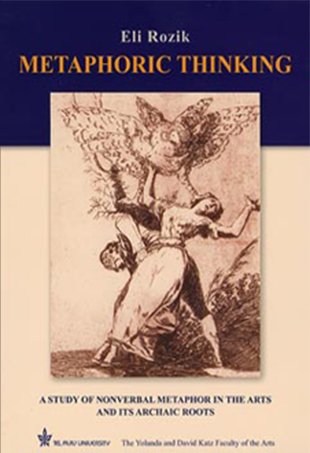
Disponible en salaen
acceso abierto | Sala Raúl Echegaray
Loading...
Metaphoric thinking. A study of nonverbal metaphor in the arts and its archaic roots
AÑO
2008
PAÍS DE ORIGEN 

Israel
EDITORIAL O ENTIDAD EDITORA
The Yolanda and David Katz Faculty of the Arts, Tel Aviv University
PÁGINAS
314
IDIOMA
Inglés
INCORPORADO AL CATÁLOGO
20.04.2022
CONSULTAS
22
SINOPSIS:For the first time, this book suggests a comprehensive theory of nonverbal metaphor in the arts and an explanation for its vast appeal: its roots in preverbal imagistic thinking. It challenges theories designed to solely explain verbal metaphor, while its main conjecture is that the study of nonverbal metaphor sheds light also on verbal metaphor. Nonverbal metaphor is a phenomenon parallel to and no less widespread than verbal metaphor. Its primeval roots in preverbal imagistic thinking are reflected in residual preverbal phenomena, such as dreaming, day dreaming and children imaginative play. Metaphor thus reflects an alternative mode of thinking, which language had to integrate under a special convention. This book suggests a definition of iconicity on imagistic grounds, alternative to the traditional semiotic one, and focuses on and explores the omnipresence of metaphor in the arts, with particular emphasis on theatre.
¿Cree que algún dato de esta ficha fue omitido o es erróneo?
Envíenos su sugerencia mediante el
formulario de contacto.
 ¡Estás usando un navegador desactualizado!
¡Estás usando un navegador desactualizado!









